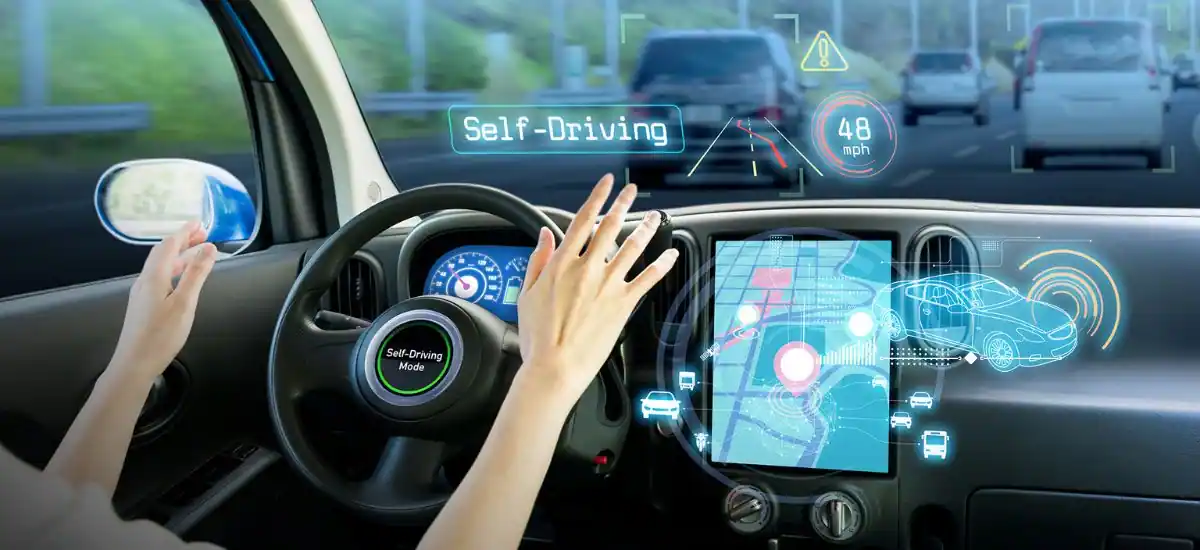Self-driving vehicles represent a significant leap forward in transportation technology, promising to revolutionize the way we travel. In Taipei, the introduction of self-driving gharrys is a prime example of this innovation. This article explores the concept of self-driving gharrys, their development in Taipei, and their impact on the city’s transportation system.
What Is A Self-Driving Gharry?
Definition and Explanation of a Gharry
A gharry is traditionally a horse-drawn carriage used for transportation. In modern terms, it refers to a small, motorized vehicle often used for short-distance travel in urban areas.
Evolution of the Traditional Gharry to the Self-Driving Gharry
The self-driving gharry is an evolution of the traditional vehicle, incorporating advanced technologies to operate autonomously. This transformation involves replacing manual controls with automated systems that can navigate and operate the vehicle without human intervention.
Features and Technologies Integrated into the Self-Driving Gharry
- Sensors and Cameras: Equipped with a network of sensors and cameras to monitor the surroundings.
- Artificial Intelligence (AI): Uses AI algorithms to interpret data from sensors and make real-time driving decisions.
- GPS and Mapping: Utilizes GPS and detailed maps to navigate routes efficiently and safely.
- Safety Systems: Includes emergency braking, collision avoidance, and other safety features to protect passengers and pedestrians.
The Development Of Self-Driving Technology In Taipei
History and Timeline of Self-Driving Technology Advancements in Taipei
The development of self-driving technology in Taipei has been a collaborative effort involving government, academia, and the private sector. Key milestones include:
- Early Research: Initial research and feasibility studies were conducted in the early 2010s.
- Pilot Programs: Launch of pilot programs in selected areas to test the technology in real-world conditions.
- Public Trials: Expansion of trials to include public usage, gathering feedback, and improving the system.
Key Players and Stakeholders Involved in the Development
- Government Agencies: Providing regulatory support and funding for research and development.
- Tech Companies: Innovators and developers of self-driving technology and vehicles.
- Academic Institutions: Conducting research and providing technical expertise.
Milestones and Significant Achievements in the Journey
- Successful Pilot Programs: Completion of pilot programs with positive outcomes.
- Regulatory Approvals: Obtaining necessary approvals for wider deployment.
- Public Adoption: Increasing public acceptance and usage of self-driving technologies.
How The Self-Driving Gharry Works

Technical Overview of the Self-Driving System
The self-driving gharry uses a combination of hardware and software to operate autonomously. Key components include:
- LIDAR and Radar: These sensors detect objects around the vehicle, providing a 360-degree view.
- Computer Vision: Cameras combined with AI to recognize and interpret visual information.
- Control Systems: Automated control of steering, acceleration, and braking based on sensor inputs and AI analysis.
Sensors and AI Technologies Used in Navigation and Safety
- Navigation: GPS and high-definition maps ensure the gharry follows the correct route.
- Safety Algorithms: AI algorithms predict and react to potential hazards, ensuring safe operation.
- Real-Time Data Processing: Continuous analysis of data from sensors to adapt to changing conditions instantly.
Integration with Existing Transportation Infrastructure
The self-driving gharry integrates seamlessly with Taipei’s existing transportation network. This includes:
- Traffic Management Systems: Coordination with city traffic control to optimize routes and reduce congestion.
- Public Transport Links: Connecting with other modes of public transport for a cohesive travel experience.
- Infrastructure Upgrades: Implementation of smart infrastructure to support autonomous vehicles.
Table Suggestion: Key Features of Self-Driving Gharry
| Feature | Description |
|---|---|
| Sensors and Cameras | Monitor surroundings for safe navigation |
| Artificial Intelligence | Interprets data and makes real-time driving decisions |
| GPS and Mapping | Ensures accurate and efficient routing |
| Safety Systems | Includes emergency braking and collision avoidance |
| LIDAR and Radar | Provide 360-degree detection of objects and obstacles |
| Computer Vision | Recognizes and interprets visual information for situational awareness |
| Control Systems | Automated steering, acceleration, and braking for autonomous operation |
Benefits Of The Self-Driving Gharry
Enhanced Safety Features and Accident Reduction

The self-driving gharry is equipped with advanced safety features that significantly reduce the risk of accidents. These include:
- Collision Avoidance Systems: Detect potential hazards and take corrective actions to avoid collisions.
- Emergency Braking: Automatically activated to prevent accidents.
- Constant Monitoring: Sensors continuously monitor the surroundings, ensuring a high level of situational awareness.
Environmental Benefits
- Reduced Emissions: Many self-driving vehicles are electric, contributing to lower carbon emissions compared to traditional vehicles.
- Energy Efficiency: Optimized routes and driving patterns enhance fuel efficiency, reducing overall energy consumption.
Convenience and Accessibility Improvements
- Ease of Use: Self-driving gharrys offer a convenient mode of transport that doesn’t require driving skills.
- Accessibility: These vehicles provide mobility solutions for people with disabilities and the elderly.
- 24/7 Availability: Can operate around the clock, providing reliable transportation at all times.
Challenges And Solutions
Technical and Logistical Challenges
- Navigation in Complex Environments: Ensuring the self-driving gharry can handle complex urban environments with heavy traffic and unpredictable events.
- Weather Conditions: Adapting to various weather conditions that might affect sensor accuracy and vehicle performance.
Solutions and Innovations to Overcome These Challenges
- Advanced Algorithms: Continuous improvement of AI algorithms to enhance navigation and decision-making in complex environments.
- Robust Testing: Extensive testing in different weather conditions to ensure reliability and safety.
Regulatory and Legal Considerations
- Legislation: Developing and implementing regulations that ensure the safe deployment and operation of self-driving vehicles.
- Liability Issues: Addressing questions of liability in the event of accidents involving autonomous vehicles.
Real-world Applications And Use Cases
Current Deployment of Self-Driving Gharrys in Taipei
Self-driving gharrys are currently deployed in various parts of Taipei, serving both residents and tourists. They operate on predefined routes, connecting popular destinations and transportation hubs.
Popular Routes and Destinations Served by the Self-Driving Gharry
- Tourist Attractions: Routes include popular tourist spots like Taipei 101 and the National Palace Museum.
- Transportation Hubs: Connect major transportation hubs such as Taipei Main Station and bus terminals.
- Commercial Areas: Serve bustling commercial districts, providing easy access to shopping and dining venues.
User Experiences and Feedback
- Positive Reviews: Users appreciate the convenience and safety of self-driving gharrys.
- Improvement Suggestions: Feedback from users is used to continuously improve the service, ensuring it meets the needs and expectations of passengers.
Comparison With Other Self-Driving Initiatives
Comparison of Taipei’s Self-Driving Gharry with Similar Initiatives in Other Cities/Countries
- Singapore: Focuses on integrating self-driving buses and taxis with existing public transport.
- San Francisco: Known for its testing of autonomous cars in urban environments with diverse conditions.
- Tokyo: Implements self-driving technology in preparation for large-scale events like the Olympics.
Unique Aspects and Competitive Advantages of Taipei’s Approach
- Cultural Integration: Incorporating local cultural elements into the design and operation of the gharry.
- Focused Routes: Selecting routes that maximize utility and convenience for residents and tourists alike.
- Collaborative Development: Strong collaboration between government, tech companies, and academic institutions.
Lessons Learned from Other Self-Driving Projects
- User Education: Importance of educating the public on the use and benefits of self-driving technology.
- Regulatory Support: Necessity of having supportive regulatory frameworks to facilitate deployment.
- Infrastructure: Need for robust infrastructure to support the integration of autonomous vehicles.
Future Prospects and Developments
Planned Expansions and Technological Upgrades
- Route Expansion: Plans to extend self-driving gharry routes to cover more areas of Taipei.
- Technological Upgrades: Continuous improvement of AI and sensor technologies to enhance performance and safety.
Potential Impacts on Taipei’s Transportation System and Urban Planning
- Reduced Traffic Congestion: Optimized routes and efficient vehicle operation can help reduce traffic congestion.
- Urban Development: Integration of self-driving vehicles in urban planning to create smarter, more connected cities.
Long-Term Vision for Self-Driving Transportation in Taipei
- Sustainability: Promoting sustainable transportation solutions to reduce environmental impact.
- Innovation Hub: Positioning Taipei as a leading city in the adoption and innovation of autonomous vehicle technology.
Public Perception And Acceptance
Public Awareness and Attitudes Towards Self-Driving Gharrys
- Growing Acceptance: Increasing public awareness and positive attitudes towards the benefits of self-driving technology.
- Concerns: Addressing concerns related to safety, privacy, and job displacement.
Educational Campaigns and Public Engagement Initiatives
- Workshops and Seminars: Conducting events to educate the public about self-driving technology.
- Public Trials: Offering opportunities for residents to experience self-driving gharry firsthand.
Strategies to Increase Acceptance and Adoption
- Transparency: Providing clear and transparent information about the technology and its benefits.
- Community Involvement: Engaging with the community to gather feedback and address concerns.
Conclusion
The introduction of self-driving gharrys in Taipei marks a significant advancement in urban transportation. This innovation not only enhances convenience and safety but also contributes to environmental sustainability. As Taipei continues to develop and expand its self-driving transportation network, it sets an example for other cities to follow. Experiencing the self-driving gharry firsthand offers a glimpse into the future of transportation, showcasing the potential of technology to transform our daily lives.
Related Posts:-

